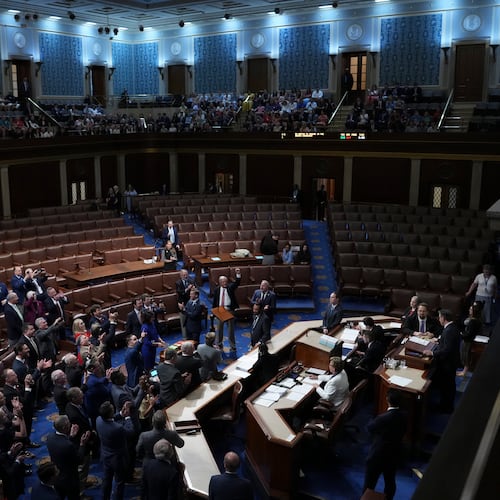As they will demonstrate with a football this afternoon, the University of Georgia and the University of Florida are rivals on the field. But they're collaborators in the field.
The two universities are both nationally ranked in agriculture. They cooperate much more than they compete, though. Imagine if the Bulldogs were invited to practice in The Swamp and sent home with the Gator playbook. That’s the equivalent of what happens in agricultural research.
In fact, UF sends what you might call its farming coaches to Tifton and Attapulgus to work with growers – people who are already very good at what they do but need to keep up with the latest advances.
Of course, UGA does the same for us.
On UF “practice fields” in Quincy, Fla., we’re trying to create new varieties of peaches, a cure for a disease that afflicts watermelon, and ways to improve cattle breeding. The North Florida Research and Education Center run by UF’s Institute of Food and Agricultural Sciences is a lot closer to Georgia than it is to Gainesville.
The North Florida center almost functions as a UGA satellite campus. Its faculty serves on UGA graduate students’ dissertation committees. A Tifton-based UGA peanut expert comes down to Quincy each year to test new UF-created varieties, bringing with him disease resistance medicines for plants that can help Florida growers.
You eat some of the safest, tastiest, most nutritious and reasonably priced food in the nation in part because of this cooperation. You also benefit from a huge economic boost from farming. UF/UGA agricultural research and innovation have a more-than $200 billion annual economic impact in Florida and Georgia.
Our scientists’ joint work on watermelons may not make for great TV, but it’s great for your tailgate party. You can thank UF and UGA plant pathologists who keep diseases like watermelon wilt from ruining that essential ingredient of your game-day feast. Of course, those scientists bolster farmers’ livelihoods as well. The two universities’ work is key to keeping Florida and Georgia ranked the Nos. 1 and 2 states in watermelon production.
UF and UGA play a role in what’s on your grill, too. If Georgia and Florida were a single state, it would be in the top 10 in beef cattle. We may rise even higher with the help of a new smartphone app created by UF and UGA scientists. The “Cowculator” can help ranchers identify the best ways to increase their herds.
Scientists based at UF and UGA research centers not only create technologies, but teach farmers to adopt them. Quincy-based faculty go to the Sunbelt Ag Expo in Moultrie to make presentations on livestock, forage and soil. UF and UGA faculty will teach Florida and Georgia nursery and greenhouse growers in Quincy next month about protecting their plants from bugs and diseases.
Our two universities are about to open a food-safety training center in Gainesville, where together we’ll train people who can help produce growers throughout the Southeast prevent food-borne illnesses.
All this is our job as land-grant universities: to create and share knowledge.
UF-UGA research is central to our states’ standing as the leading and second-largest producers of peanuts in the United States, too. We in Florida don’t pretend we’re in Georgia’s league in peaches, but we’re jointly developing with UGA and the U.S. Department of Agriculture new varieties in Quincy that will be suited to the climate of South Georgia and north Florida.
Whatever the commodity, agriculture faces a swarm of challenges. Pests and disease, drought, volatile temperatures, soil conditions and fertilizer use all have to be reckoned with. Agricultural research universities are where farmers most often turn for solutions.
That helps farmers make money. It creates jobs; nearly 3 million people work in the agriculture and natural resource sectors in the two states. It helps agriculture support spinoff businesses like tractor repair, crop insurance and irrigation equipment sales. In some places, farms are a critical part of the local tax base that pays for services such as police and fire departments.
Let’s not forget our two universities are for teaching, too. Even a Heisman Trophy winner needs an academic home when he’s not on the field. The UF/IFAS College of Agricultural and Life Sciences counts Tim Tebow among its alumni.
The two universities perfect the sod for football fields. And this summer, our plant breeders put blueberries in the Gator athletes’ cafeteria and even used frozen berries to chill our Gatorade on the practice fields.
If UF wins today, we’ll let you know how to include more antioxidants on your training table. If UGA wins, we’ll be calling to see if your researchers have figured out if peaches play a role in improving athletic performance. On the other hand, I don’t expect our athletic departments will be swapping game films.
Jack Payne is senior vice president for agriculture and natural resources at the University of Florida and leader of the Institute of Food and Agricultural Sciences.
About the Author
Keep Reading
The Latest
Featured



